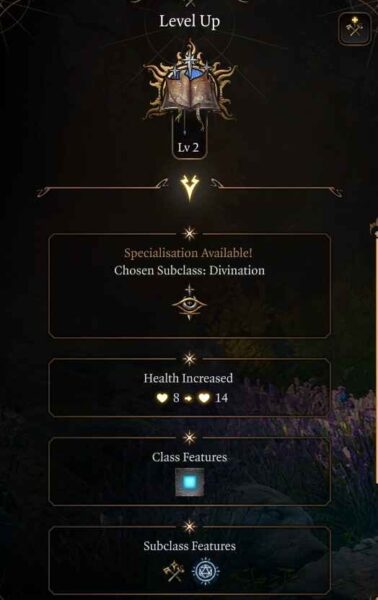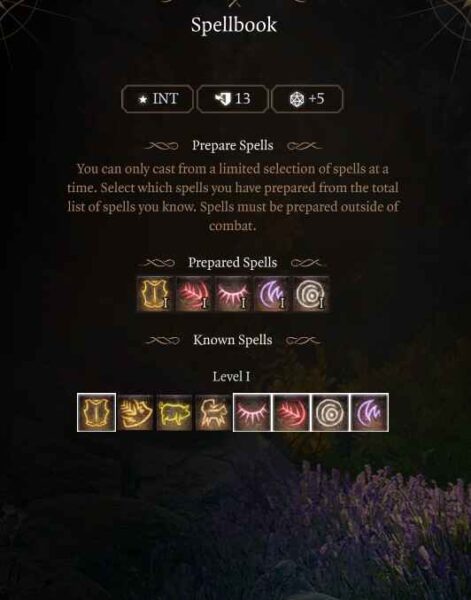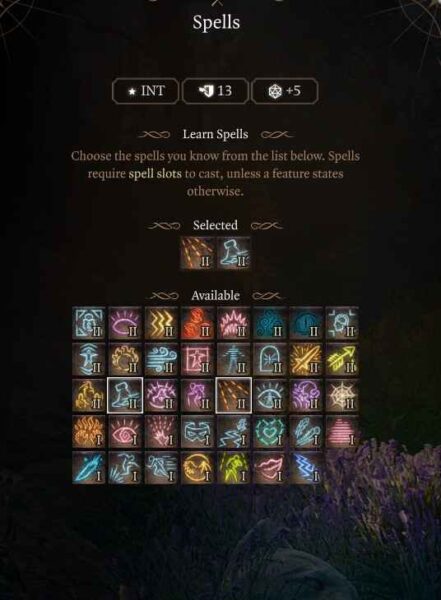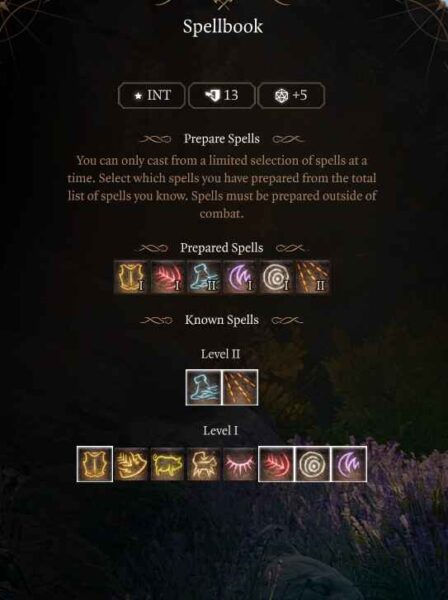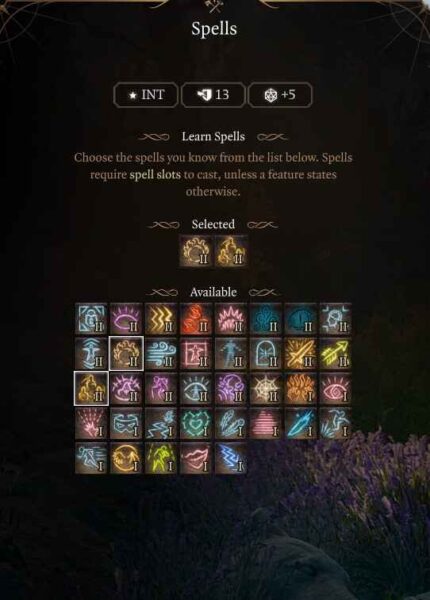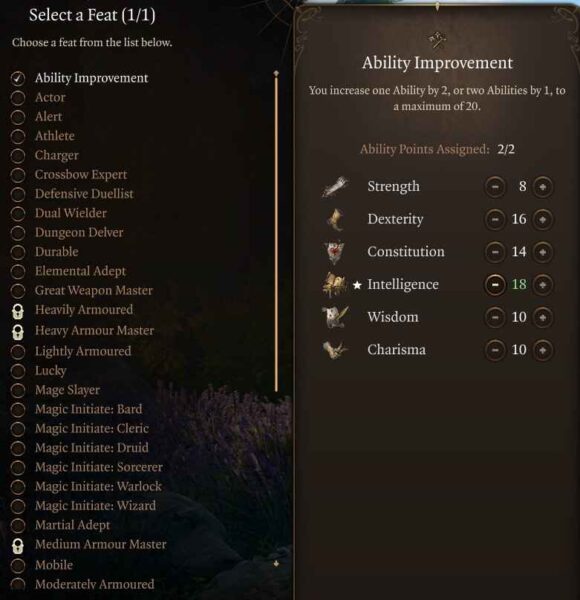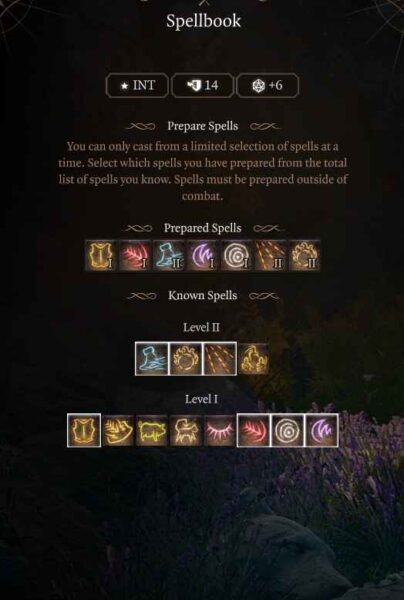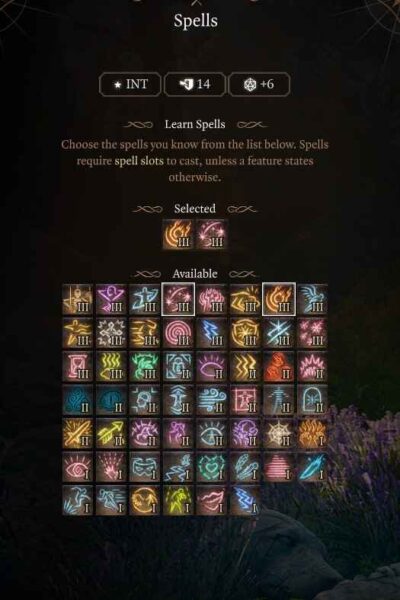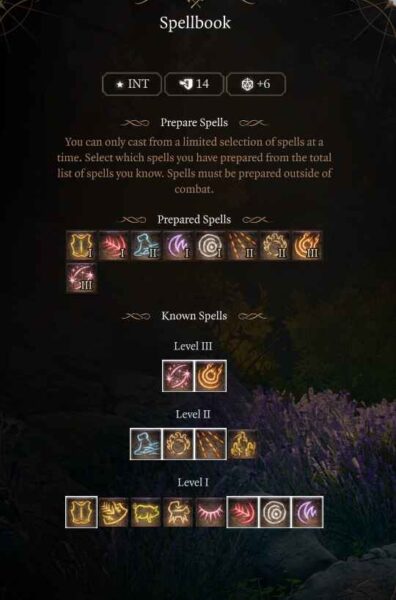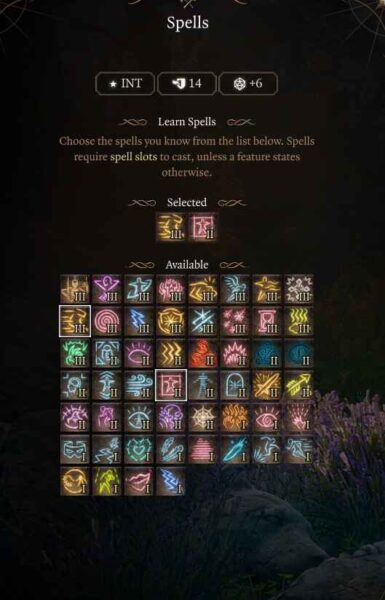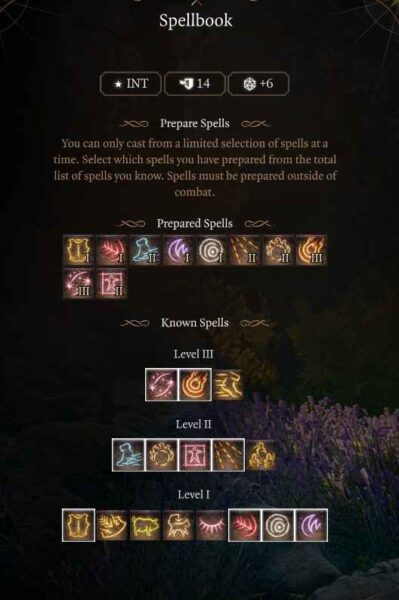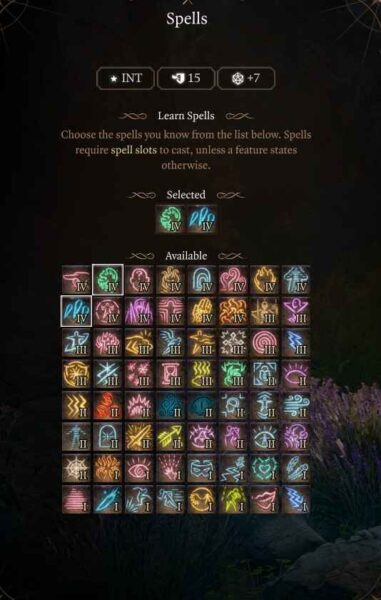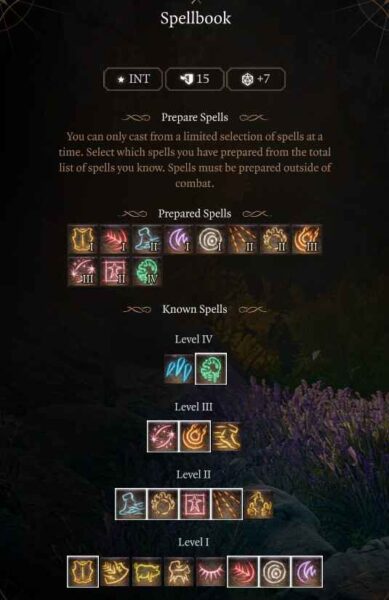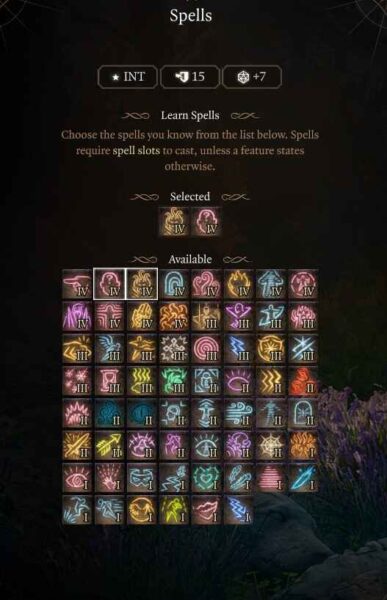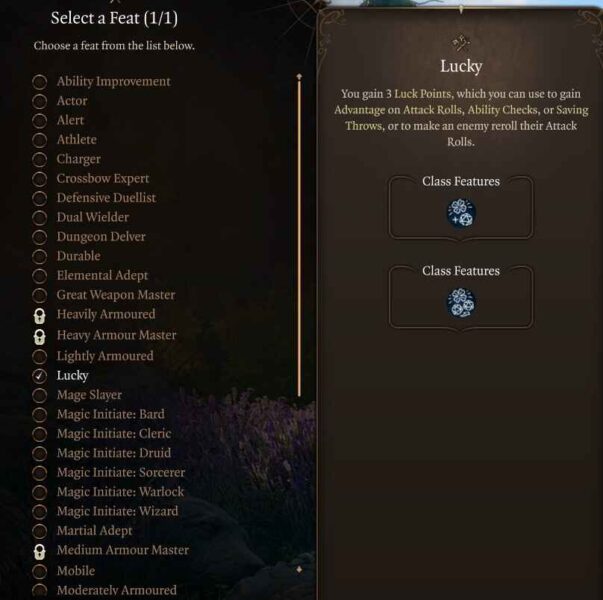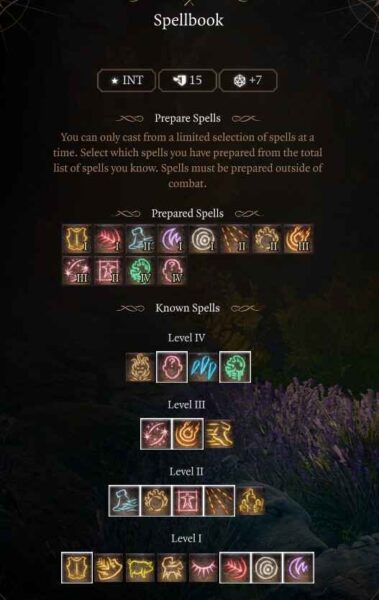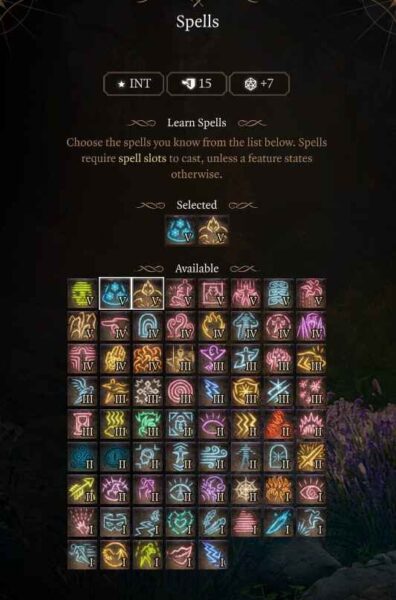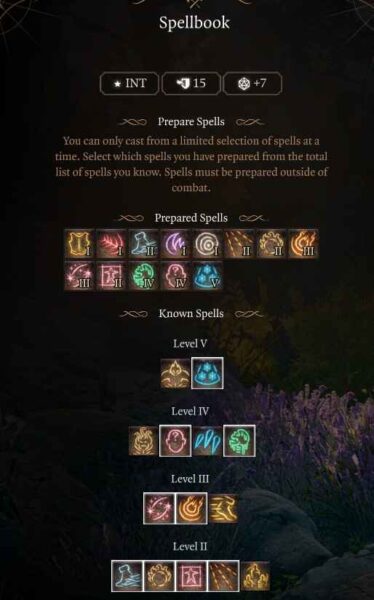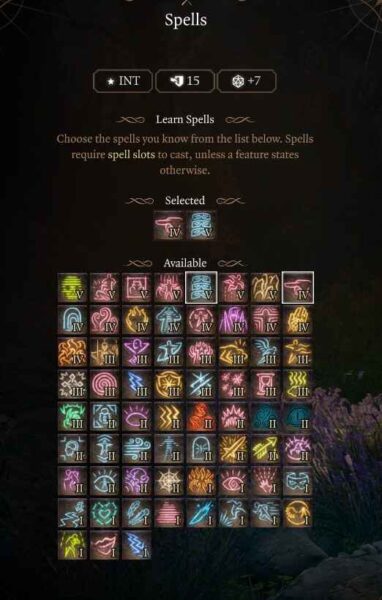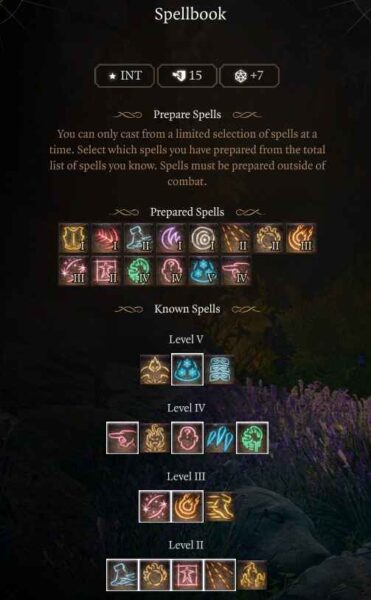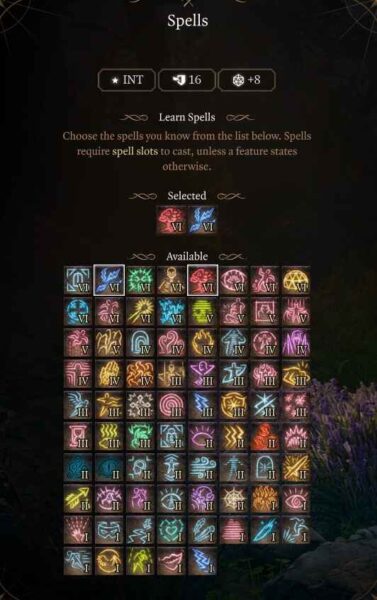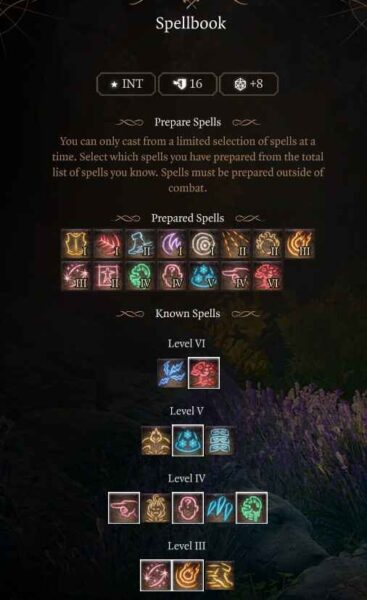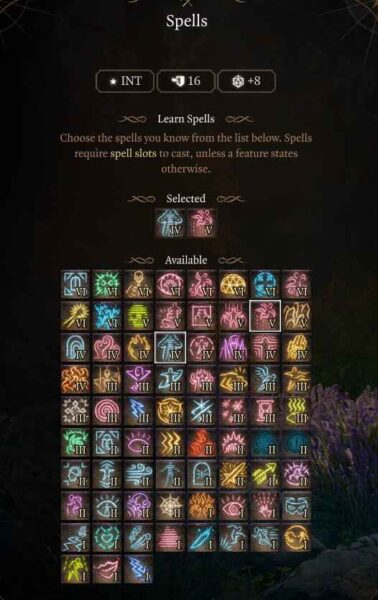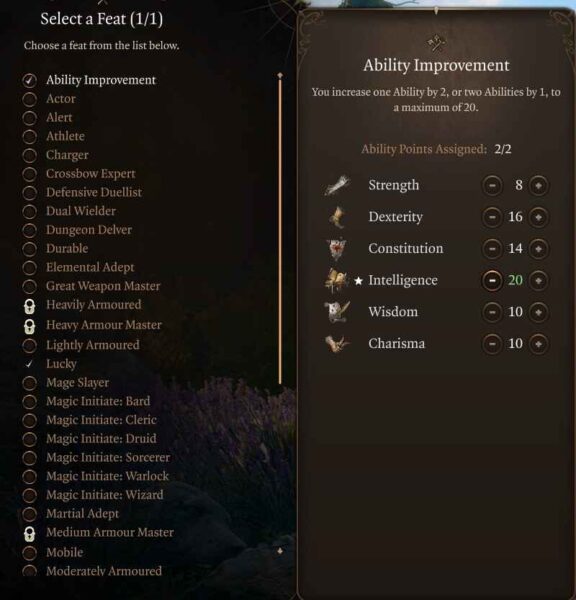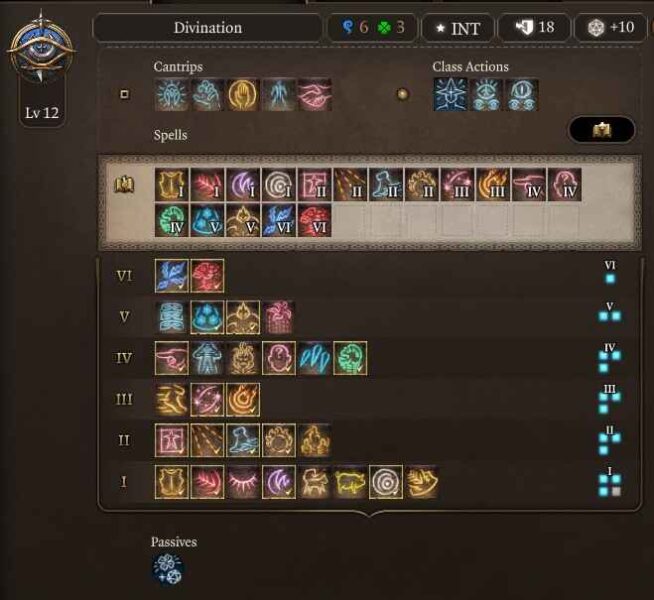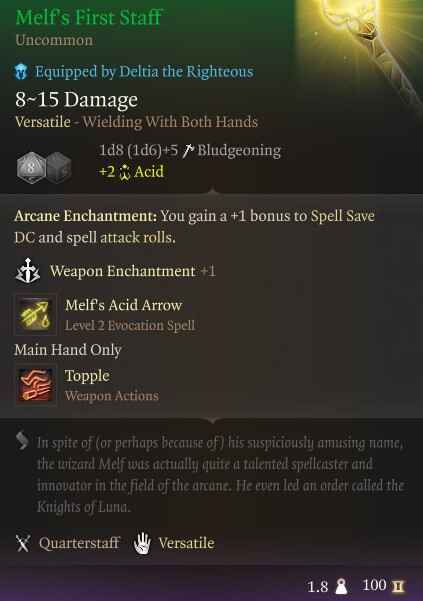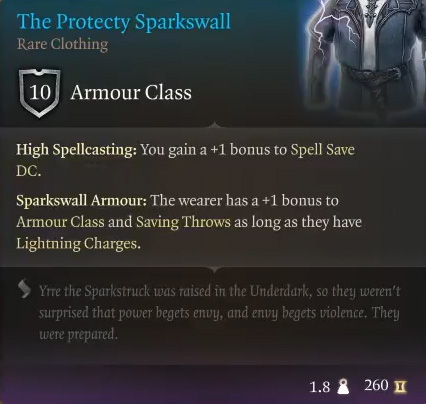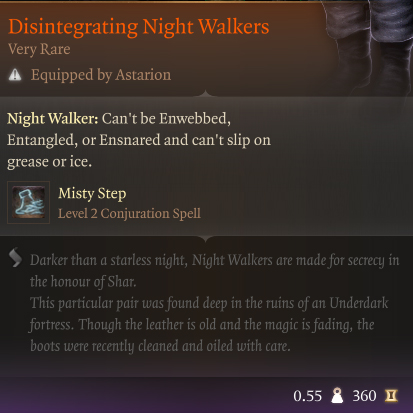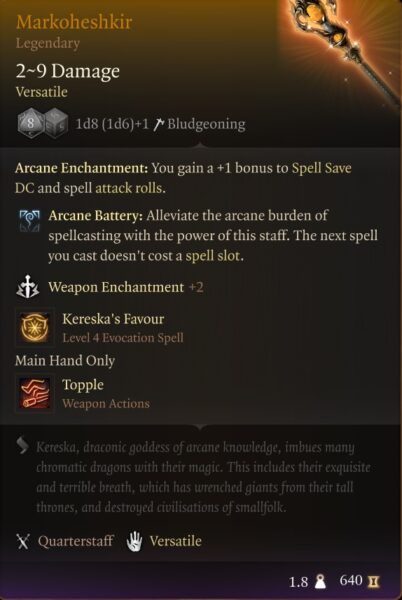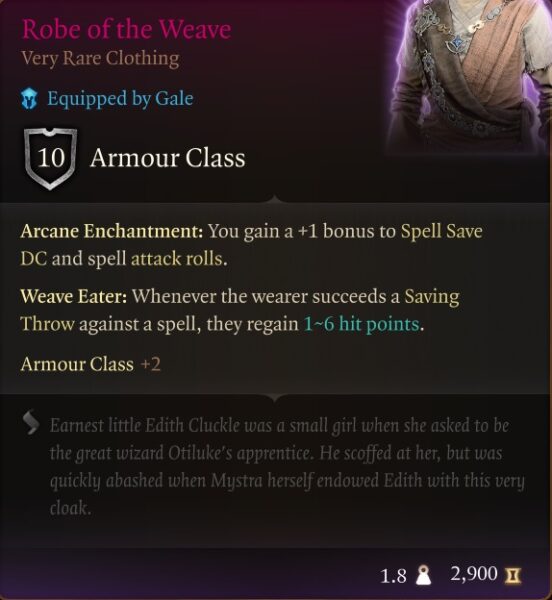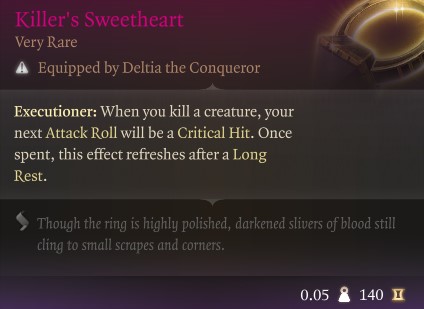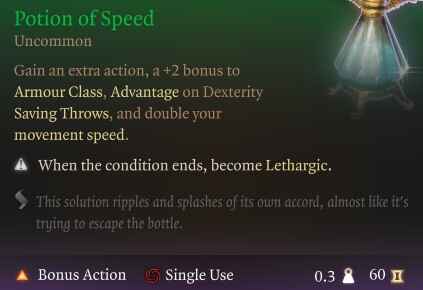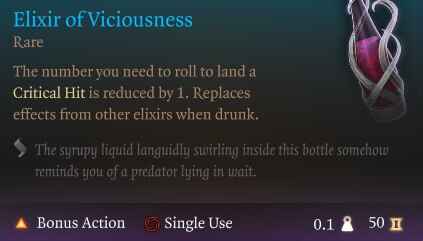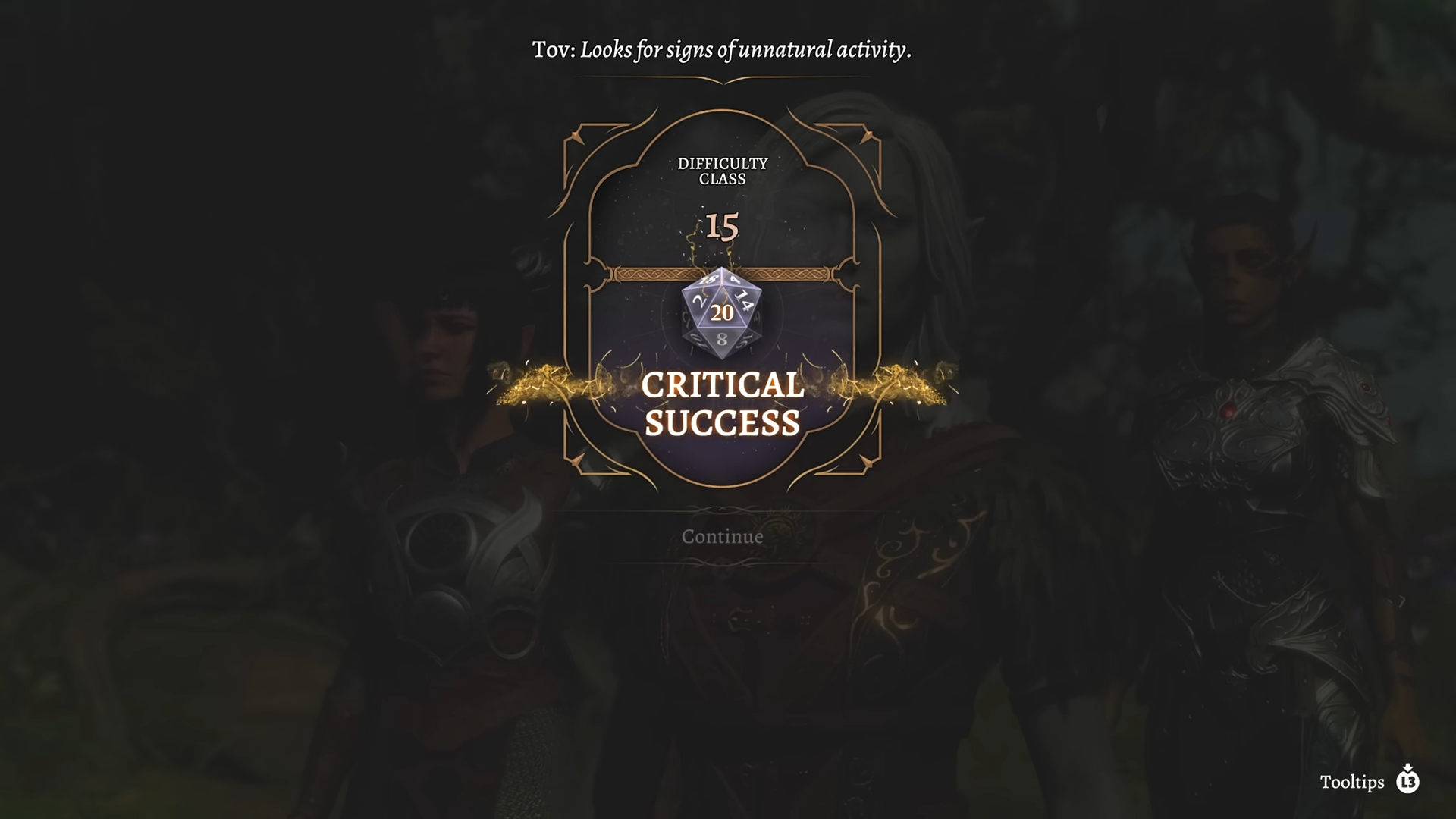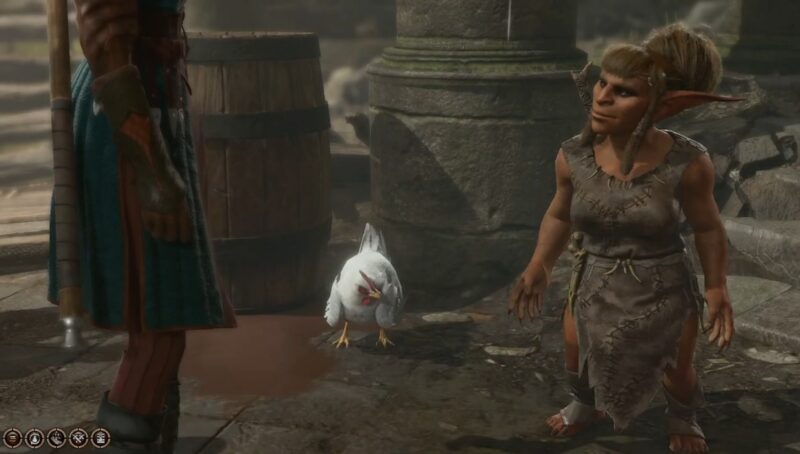This guide focuses on the best Wizard build in Baldur’s Gate 3, the Divination subclass, and includes all components to create a powerful character.
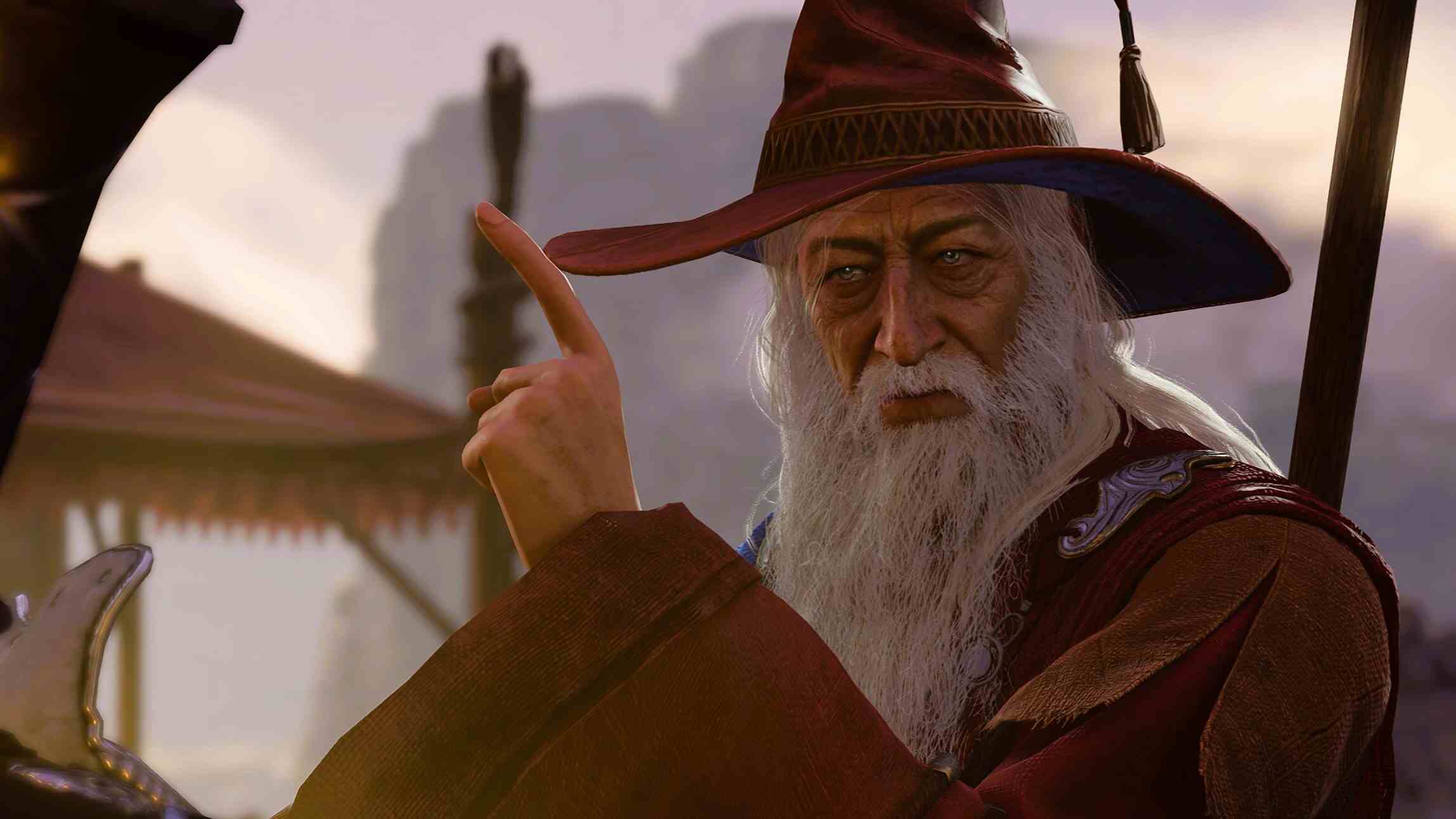
This build page has been updated for the Patch 8 version of Baldur’s Gate 3.
Divination Wizard Class Introduction
Wizards class are renowned for their spellcasting prowess and unmatched versatility. They have access to the largest spell list in the game, enabling them to adapt to various situations. Wizards excel in area-of-effect spells, utility, and control, but they may require careful planning and preparation.
For this build, we will be using the Divination school subclass. The subclass plays in a unique style shutting down opponents’ attack rolls with Portent. Portent is a subclass feature that helps manipulate dice rolls. This build will use the typical cloth, quarterstaff Wizard playstyle, but with the Divination subclass, you get an extra mechanic that is fun and useful to shut down on change dice rolls. Pick this subclass if you want to counter enemies.
Patch 8 Changes to Divination Wizard Build for BG3
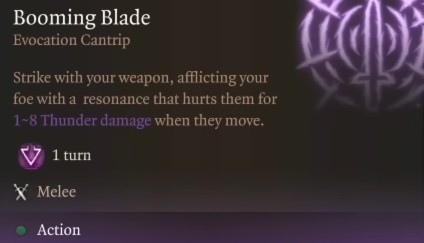
Patch 8 of Baldur’s Gate 3 redefines the Wizard class with the addition of the Bladesinging subclass and Booming Blade cantrip, allowing Wizards to excel in melee combat. This agile, front-line playstyle trades some traditional spellcasting power for increased mobility, AC, and consistent melee damage.
For even more versatility, a one-level dip into Hexblade Warlock adds armor and weapon proficiencies. Additionally, you get access to Eldritch Blast, boosting both defense and early-game damage. While you lose a feat at Level 12, the overall combat flexibility makes this hybrid build a strong and fun alternative. For more details on exact level progression, see our alternative build below.
Divination Wizard Class Mechanics and Features
Here are the essential Baldur’s Gate 3 Divination Wizard Build features and mechanics to focus on:
- Primary Ability: Intelligence
- Saving Throws: Intelligence and Wisdom
- Subclass: Divination School
- Armour Proficiency: None
- Weapon Proficiency: Quarterstaves, Light Crossbows, Dagger
- Preferred Armor: Clothing
- Preferred Weapon: Quarterstaff
- Divination Savant: Learning Divination spells from scrolls costs 25 gold pieces per spell level.
- Portent: Gain Portent Dice which can be spent as a reaction to alter Attack Roll or Saving Throw.
- Arcane Recovery: Replenish spell slots while out of combat.
Wizard Spell Casting Explained
- Cantrips: are like spells, but you can cast them infinitely, and they don’t take your spell slots.
- Prepared Spells: allows you to swap in and out spells that you’ve learned in your spell book.
- Spell Slots: limited resource of spells you can cast which needs long rest to replenish.
- Arcane Recovery: a resource that allows you to recover used spell slots.
- Concentration: spells that require you to focus which can be interrupted and you can only have one active at a time.
For the list of the best spells for the Wizard, look below in level progression.
Divination Subclass
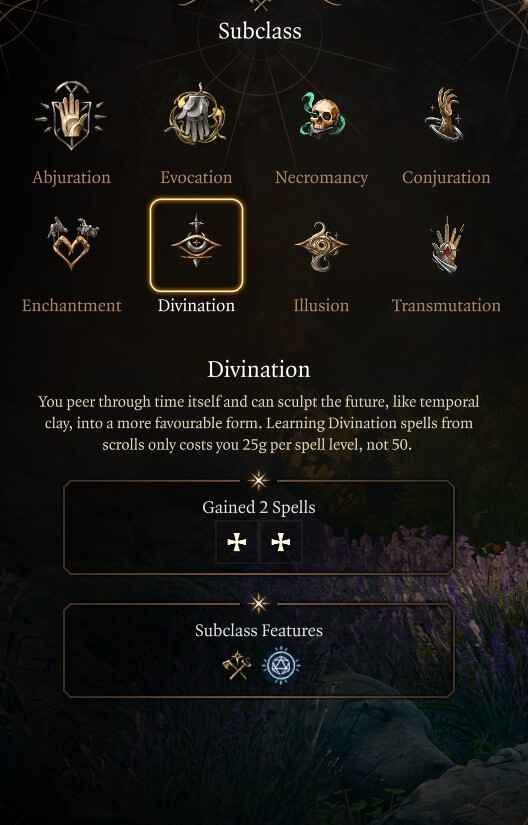
The Divination subclass is a great choice for players looking to control the battlefield and dice roll outcomes. You gain Portent which allows you to see in the future and change die rolls. This helps not only you, but teammates, manipulating the situation when you need to land or avoid attacks. Divination is a unique playstyle that is fun, and from a roleplay aspect, is a great choice for someone looking to create a clairvoyant character.
The Divination Wizard School subclass unlocks the following features and spells:
- Divination Savant (Level 2) – Learning Divination spells from scrolls costs half as much, becoming 25 gold pieces per spell level.
- Portent (Level 2) – Your dreams grant you a glimpse that let you influence the future. After each Long Rest, you gain two random Portent Dice. During the day, you can use your reaction to change the die of any Attack Roll or Saving Throw rolled near you to one of your Portent Dice. Each Portent Die can only be used once, and you lose your unused Portent Dice at the end of the day.
- Expert Divination (Level 6) – You have an additional Portent Die. When taking a Short Rest you regain any spent Portent Dice.
- Third Eye: Darkvision (Level 10) – You gain the ability to see in the dark out to a range of 24m.
- Third Eye: See Invisibility (Level 10) – Become able to see invisible creatures, and possibly reveal them to others.
Character Creation
| Category | Selection |
|---|---|
| Character | Origin – Custom character |
| Race | High Half-Elf |
| Racial Bonus | Darkvision, Civil Militia, Free Cantrip |
| Class | Wizard |
| Subclass | Divination |
| Cantrips | Fire Bolt, Light, Mage Hand, Blade Ward |
| Spells | Mage Armour, Magic Missile, Sleep, Thunderwave, Chromatic Orb, Shield |
| Background | Sage |
| Ability Score | STR: 8 DEX: 16 CON: 14 INT: 16 WIS: 10 CHA: 10 |
| Skill Proficiencies | Investigation and Religion |
Recommended Backgrounds
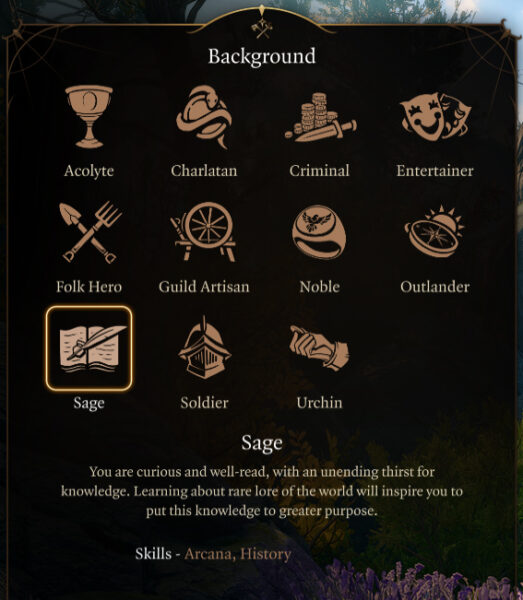
Sage is the best background for the Divination Wizard Build because you gain two intelligence-based skills. This choice mostly influences roleplaying and dialogue options aspects and allows you to create unique characters. Additional choices for the Best Baldur’s Gate 3 Divination Wizard Build are:
- Sage: Proficiency in Arcana (intelligence) and History (intelligence). You are curious and well-read, with an unending thirst for knowledge. A companion who’s a Sage background is Gale.
- Acolyte: Proficiency in Insight (wisdom) and Religion (intelligence). You have spent your life serving a temple, learning sacred rites, and providing sacrifices to the god or gods you worship. Shadowheart is an Acolyte.
- Noble: Proficiency in History (intelligence) and Persuasion (charisma). You were raised in a family among the social elite, accustomed to power and privilege. A noble companion is Minthara.
Best Race Choice for Divination Wizard Build

The best overall race for our Best Baldur’s Gate 3 Divination Wizard Build Guide is the High Half-Elf because they get an extra cantrip, light armour and shield proficiency. High Half-Elf can pair a quarterstaff with a shield at level 1 for extra Armour Class (AC) along with Darkvision making it the best race for Divination Wizard in BG3. The Human race also has Civil Militia traits with extra skill proficiency and additional carrying capacity making it a great secondary choice.
| High Half-Elf | Human |
|---|---|
| Free Cantrip | Civil Militia |
| Civil Militia | Extra Skill Proficiency |
| Darkvision | Additional Carry Capacity |
The Wizard’s racial choice will not influence ability score, as everyone should get a +2 and +1 to spend regardless. This frees your race choice up to not completely hinder yourself based on ability score, but race features. Each of these races offers unique advantages that can enhance your combat prowess, survivability, or utility. Additionally, consider the roleplaying opportunities and character concepts that resonate with you.
Recommended Skills for Divination Wizard Build
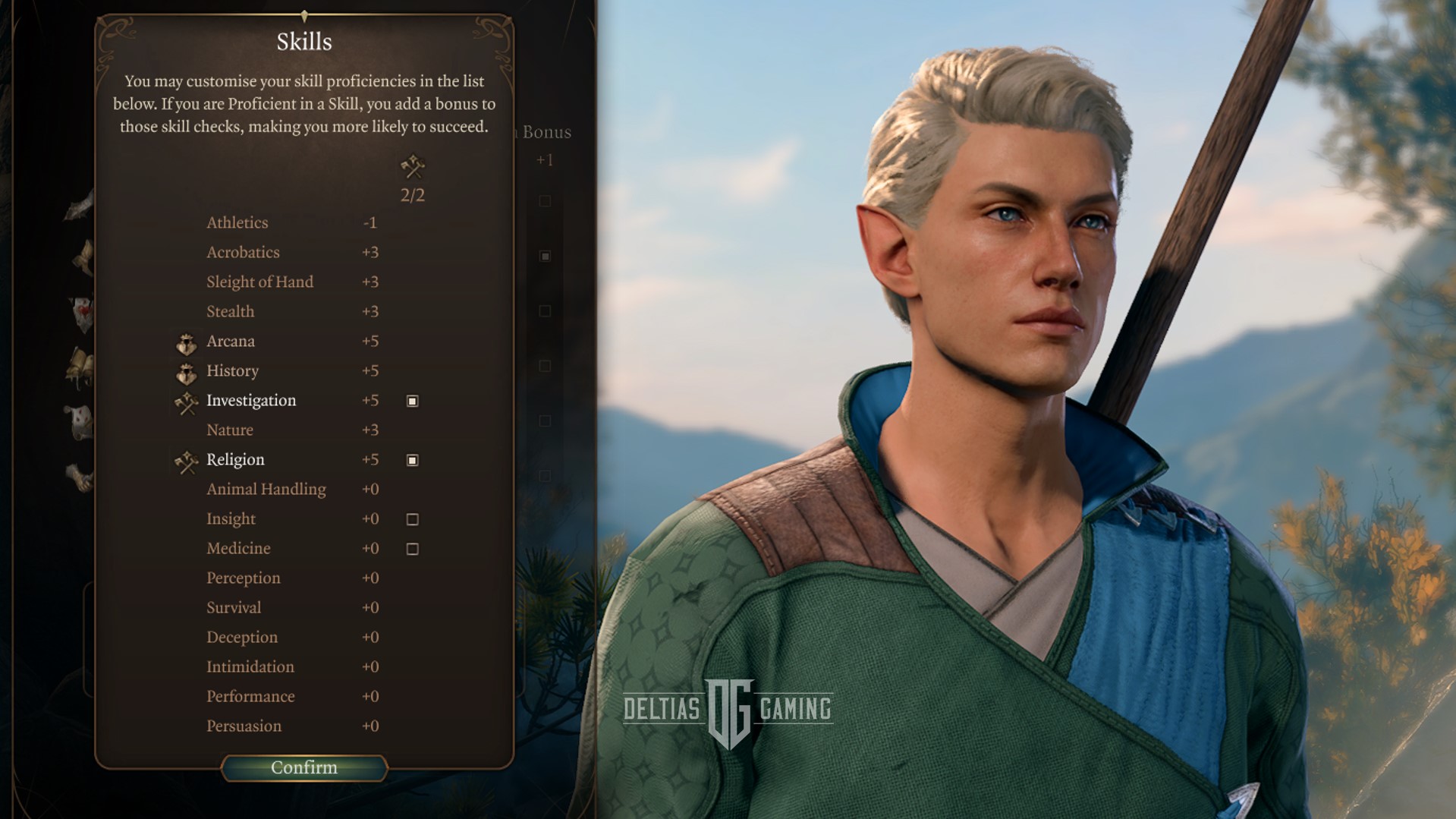
Investigation and Religion are the best skills for our Best Baldur’s Gate 3 Divination Wizard Build Guide because they complement your class abilities and enhance your effectiveness in various situations. In Baldur’s Gate 3, skills represent the abilities and proficiencies of your character that allow them to perform various actions and interact with the game world. Skills are associated with specific attributes and are used to determine the success or effectiveness of certain actions or abilities. They can be edited during character creation or with companions, during respec or reroll screen.
Here are the best skills for Divination Wizard in Baldur’s Gate 3:
- Investigation: is an Intelligence skill used to analyze clues and solve mysteries.
- Religion: is an Intelligence skill that helps recognize deities and holy rites.
Best Wizard Ability Scores
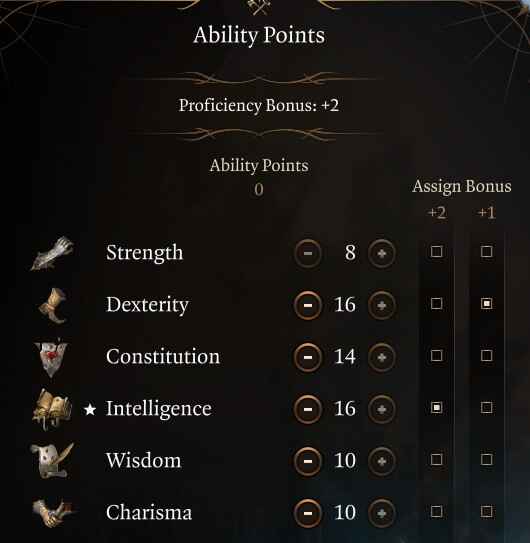
Below is the best ability score to unlock the full potential of the Best Baldur’s Gate 3 Divination Wizard Build Guide:
| Ability | Points Goal |
|---|---|
| Strength | 8 |
| Dexterity | 16 |
| Constitution | 14 |
| Intelligence | 16 |
| Wisdom | 10 |
| Charisma | 10 |
The best Divination Wizard ability score is 16 Intelligence because it increases spells’ chance to land and damage along with 16 Dexterity. Dexterity and cloth will help with your Armour Class (AC), and combine 16 Dexterity with Mage Armour spells you have 16 AC at the level and a much better chance to avoid spells.
During character creation, the game will automatically distribute your abilities in the character creation abilities tab. You will need to reprioritize the stats for the chart for the Best Wizard build. Simply use the plus-minus in the character creator and make sure you have the suggested race, or the numbers will be off.
Best Companions for Wizard Build
The best companion for a Wizard Build in Baldur’s Gate 3 is Lae’zeal because she’s a melee-focused damage dealer. She will engage enemies and take the pressure off your ranged-focused build, allowing you to free-cast spells. Having a heavy focus on melee will keep you in the distance while applying pressure, snaring, and debuffing the opposition.
- Lae’zeal (Fighter): damage, crowd control, and in-your-face aggression.
- Shadowheart (Cleric): buffs, healing, and control.
- Astarion (Rogue): ranged damage, thieving, disarming of traps.
When putting your party together, consider companions for not only their combat prowess but also their outside ability and skills that can influence storytelling, dialogue, and exploration. A balanced party will fit the traditional RPG ‘holy trinity’: Tank, Healer, and DPS. Ideally, in Baldur’s Gate 3 you’re are going to want one tank, one healer, one melee DPS, and one range DPS. Some classes/subclasses can cover both roles, so feel free to experiment and find out what works best for you with the Best Baldur’s Gate 3 Divination Wizard Build Guide.
Divination Wizard Spell Slots
Here’s a chart that shows the levels and spell slots unlocked for the Wizard class in Baldur’s Gate 3:
| Wizard Level | 1st | 2nd | 3rd | 4th | 5th | 6th |
|---|---|---|---|---|---|---|
| Level 1 | 2 | 0 | 0 | 0 | 0 | 0 |
| Level 2 | 3 | 0 | 0 | 0 | 0 | 0 |
| Level 3 | 4 | 2 | 0 | 0 | 0 | 0 |
| Level 4 | 4 | 3 | 0 | 0 | 0 | 0 |
| Level 5 | 4 | 3 | 2 | 0 | 0 | 0 |
| Level 6 | 4 | 3 | 3 | 0 | 0 | 0 |
| Level 7 | 4 | 3 | 3 | 1 | 0 | 0 |
| Level 8 | 4 | 3 | 3 | 2 | 0 | 0 |
| Level 9 | 4 | 3 | 3 | 3 | 1 | 0 |
| Level 10 | 4 | 3 | 3 | 3 | 2 | 0 |
| Level 11 | 4 | 3 | 3 | 3 | 2 | 1 |
| Level 12 | 4 | 3 | 3 | 3 | 2 | 1 |
Divination Wizard Illithid Powers
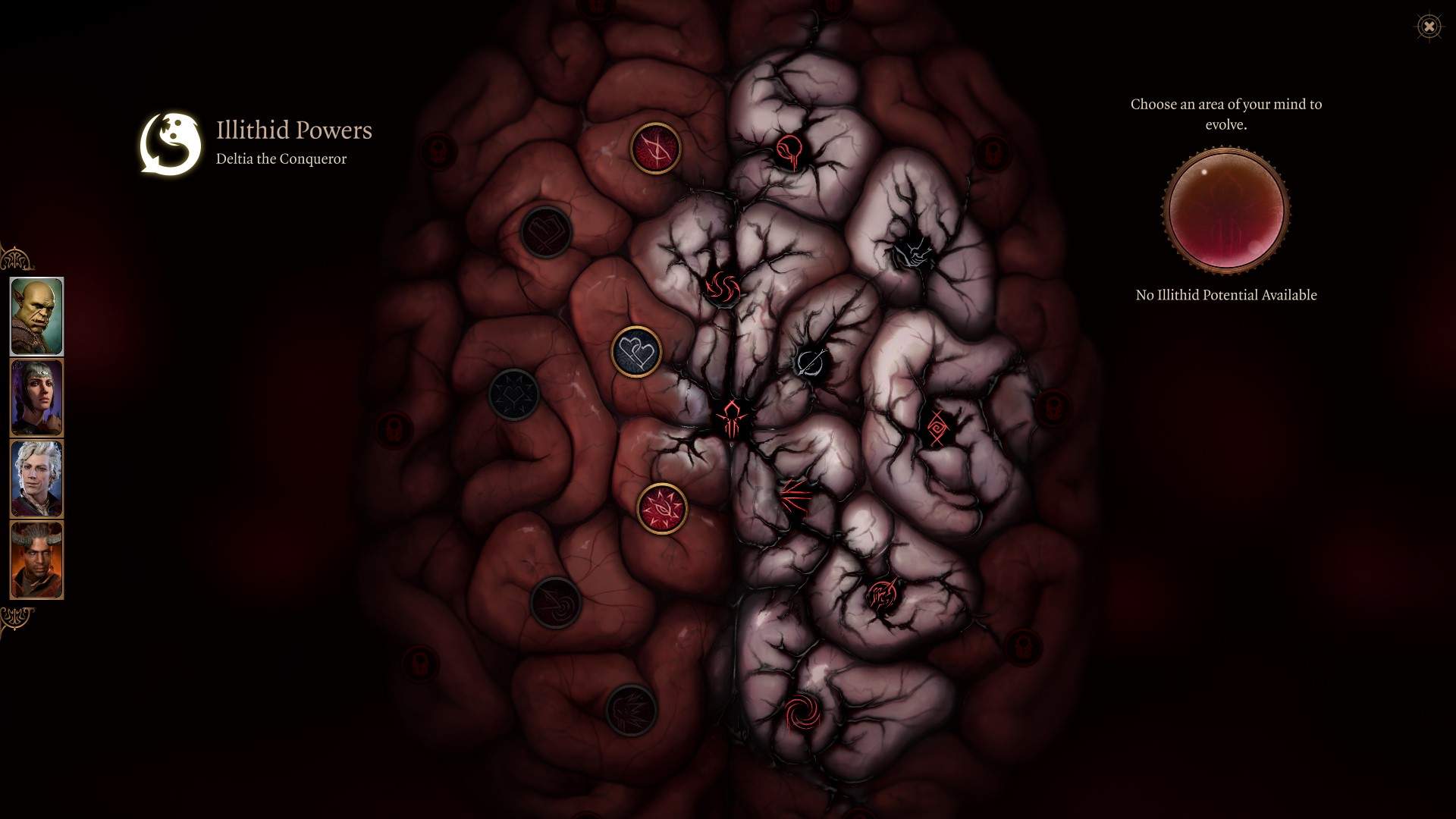
Illithid Powers are unlocked later in the game when you learn more about the Mind Flayers and tadpoles. You can gain jars of Mind Flayer Parasite Specimens, consume them to gain one point. This is essentially another skill tree advancement with some very strong powers. If you decide to advance this skill line, these are the choices we suggest.
Here are the best Illithid Powers for the Best Baldur’s Gate 3 Divination Wizard Build Guide:
| Illithid Powers | Description |
|---|---|
| Cull of the Weak | When you bring a creature down to fewer hit points than your number of evolved Illithid powers, it dies and all nearby creatures take 1-4 Psychic damage. |
| Psionic Backlash | When an enemy within 9m casts a spell, you can use your reaction to inflict ld4 Psychic damage to the caster per the spell’s level. |
| Blackhole | Area-based suck-in that slows targets. |
| Repulsor | Massive area knockback that can hit friendlies. |
| Charm | This is the priority power you want to obtain because you can force enemies to attack something else. |
Related:
Divination Wizard Level Progression
| Level | Class | Selection |
|---|---|---|
| 1 | Wizard | Fire Bolt, Light, Mage Hand, Blade Ward, Mage Armour, Magic Missile, Sleep, Thunderwave, Chromatic Orb, Shield |
| 2 | Wizard | Subclass: Divination, Grease, Find Familiar, Portent |
| 3 | Wizard | Scorching Ray, Misty Step |
| 4 | Wizard | Feat: Ability Improvement Intelligence, Minor Illusion, Flaming Sphere, Mirror Image |
| 5 | Wizard | Fireball, Counterspell |
| 6 | Wizard | Haste, Hold Person |
| 7 | Wizard | Blight, Ice Storm |
| 8 | Wizard | Feat: Lucky, Conjure Minor Elemental, Confusion |
| 9 | Wizard | Cone of Cold, Conjure Elemental |
| 10 | Wizard | Friends, Banishment, Seeming |
| 11 | Wizard | Disintegrate, Chain Lighting |
| 12 | Wizard | Feat: Ability Improvement Intelligence, Greater Invisibility, Telekinesis |
Alternative Divination Wizard Build
For our alternative Divination Wizard build, start at Level 1 by choosing Warlock with the Hexblade subclass. This grants early access to the cantrips Eldritch Blast and Booming Blade, plus proficiencies in medium armor, shields, and martial weapons for better early durability. If you prefer robes, be sure to take Mage Armour at Level 3 for extra defense.
While this guide focuses on the Divination sublcass, we recommend taking Evocation here for stronger synergy with offensive and area spells. You’ll miss an extra feat at Level 12 due to multiclassing, but the increased survivability and early damage potential make up for it. This build delivers solid damage from the start and remains effective through the endgame.
| Level | Class | Selection |
|---|---|---|
| 1 | Warlock | Subclass: Hexblade, Eldritch Blast, Booming Blade, Hex, Shield |
| 2 | Wizard | Firebolt, Mage Hand, Friends, Chromatic Orb, Magic Missile, Longstrider, Shield, Thunderwave, Find Familiar |
| 3 | Wizard | Subclass: Evocation, Mage Armour, Protection from Good and Evil |
| 4 | Wizard | Misty Step, Scorching Ray |
| 5 | Wizard | Bursting Sinew, Mirror Image, Blur, Feat: +2 Intelligence |
| 6 | Wizard | Fireball, Counterspell |
| 7 | Wizard | Haste, Glyph of Warding |
| 8 | Wizard | Conjure Minor Elemental, Ice Storm |
| 9 | Wizard | Banishment, Blight, Shocking Grasp, Feat: Spell Sniper |
| 10 | Wizard | Conjure Elemental, Cone of Cold |
| 11 | Wizard | Toll of the Dead, Hold Monster, Confusion |
| 12 | Wizard | Disintegration, Globe of Invulnerability |
Level 1
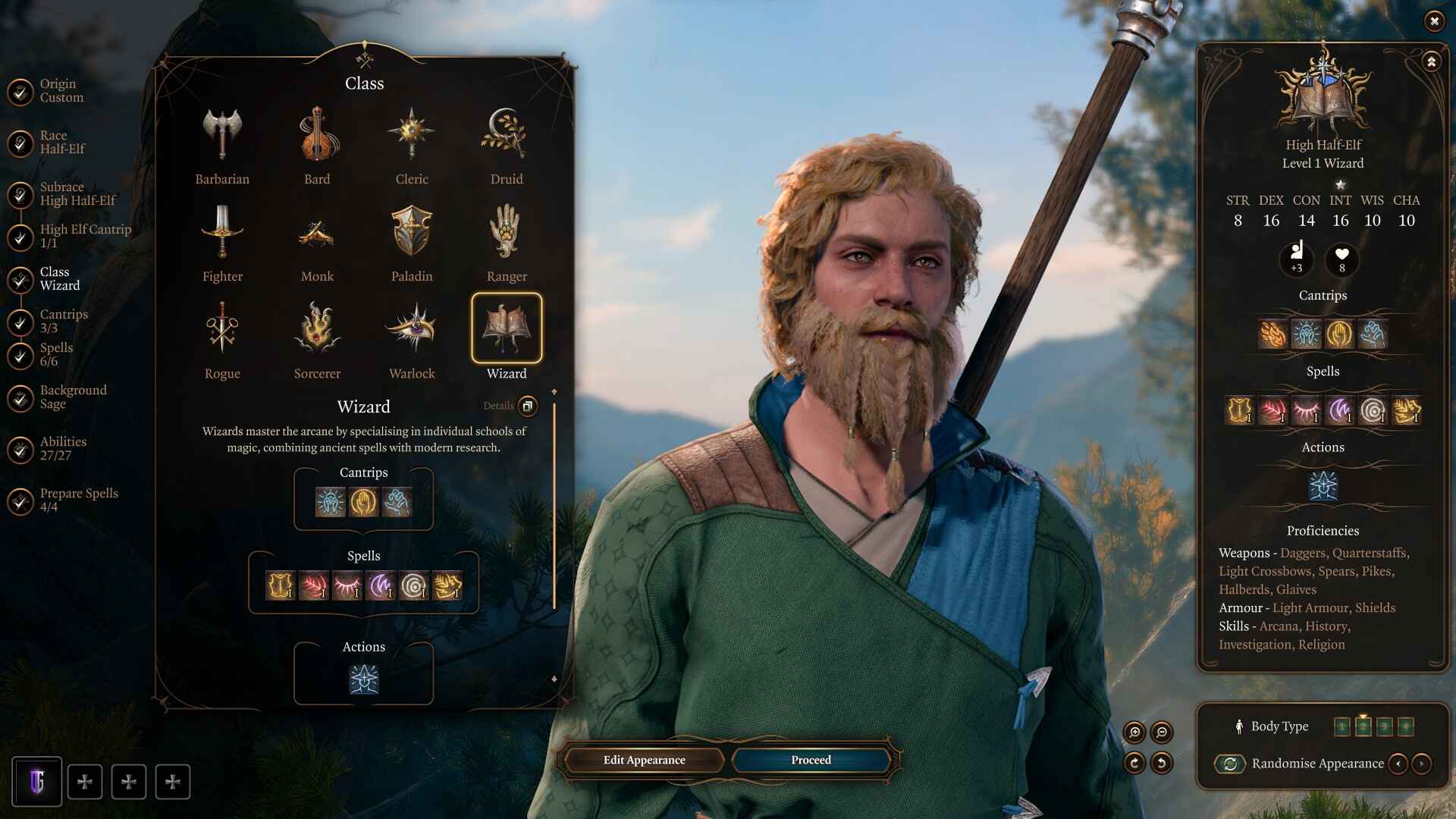
At Level one follow our character creator to pick all correct background, race, skills, and ability distribution focusing on intelligence and dexterity. You want to use cloth and a quarterstaff. If you’ve picked a High Half-Elf or a Human, you can equip a shield with a Quarterstaff for some extra AC. At Level 1 the Wizard will unlock the following: three cantrips, two Level 1 spells slots and learn six spells.
Cantrip Selection
- Fire Bolt: Hurls fireball dealing 1d10 fire damage 18m range.
- Light: Infuse an object with an aura of light. Lasts until Long Rest.
- Blade Ward: Take only half of the damage from Bludgeoning, Piercing, and Slashing attacks
- Mage Hand: Create a spectral hand that can manipulate and interact with objects.
Spell Selection
- Mage Armour: Surround an unarmoured creature with a protective magical force. Its Armour Class increases to 13 + Dexterity modifier.
- Magic Missile: Create 3 darts of magical force, each dealing 1d4+1 Force to its target. The darts always hit their target.
- Sleep: Put creatures into a magical slumber. Select targets up to a combined 24 hit points.
- Thunderwave: Release a wave of thunderous force that pushes away all creatures and objects (2d8 Thunder).
- Chromatic Orb: Hurl a sphere that deals 3-24 elemental damage and possibly creates a surface on impact.
- Shield: When you are about to be hit by an enemy, increase your Armour Class by 5 as a reaction.

Arcane Recovery: you can recover two spell slots. The number allows you to either restore two level 1 spells or one level 2 spell. It’s a simple mechanic that you can use to prevent endless Resting in between fights. Expect a lot of rest at lower levels where your spell slots are limited.
Divination Wizard Gameplay & Priorities
The most important element of playing a Wizard is making sure that you use Mage Armour immediately following every long rest. This will boost your Armour Class to 16. Moreover, if you can also equip a shield, you’ll reach 18 AC. However, to equip a shield you need a race like Half-Elf or Human! Secondly, your next priority is to focus on crowd control. This can be done with Sleep, Grease, and Fire Bolt combination. Additionally, you can use Thunderwave as a knockout, and ice version of Chromatic Orb for stuns. Wizards become much more powerful at level 5 but expect a slow start until you reach there. Your priorities early are:
- Complete Prologue
- Recruit Companions
- Unlock Withers, respec companions to proper class/ability score
- Collect the Necromancy of Thay (important in Act 3)
- Reached Hollowed City/Druid Grove
- Sell, Stock up, complete quests
- Unlock summons, Scratch, Shovel
- Progress to level 5
- Reach Underdark and Grymforge
- Check all Permanent Bonuses in Act 1 and the best Gear
- Act 1 Checklist for step-by-step completion
In summary, you want to have a knockback, area damage, single target damage and stuns. The default spell selection will give you this, but you can freely swap in and out spells as you learn what’s best for your party composition.
Divination Wizard Level 1 Prepared Spells: Mage Armour, Magic Missile, Sleep, and Thunderwave.
Level 2
Level 2 the Wizard picks their subclass (obviously we will be choosing Divination School here), they get two spells and will have a total of 5 prepared spells. You get access to two subclass features from the Divination school.
- Grease (spell selection): Cover the ground in grease, slowing creatures within and possibly making them fall Prone.
- Find Familiar (spell selection): Summon a familiar, fey spirit that takes an animal form of your choosing.
- Divination Savant (subclass feature) – Learning Divination spells from scrolls costs half as much, becoming 25 gold pieces per spell level.
- Portent (subclass feature) – Your dreams grant you a glimpse that lets you influence the future. After each Long Rest, you gain two random Portent Dice. During the day, you can use your reaction to change the die of any Attack Roll or Saving Throw rolled near you to one of your Portent Dice. Each Portent Die can only be used once, and you lose your unused Portent Dice at the end of the day.
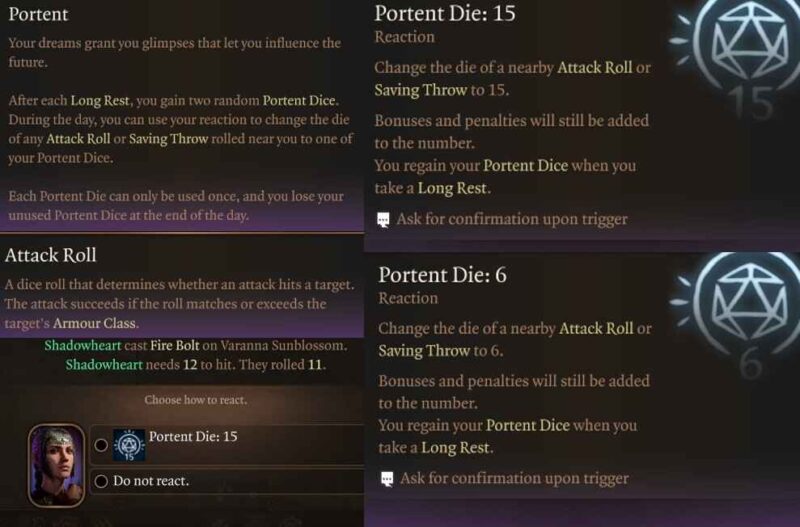
Divination Wizard Level 2 Gameplay
Level two unlocks your subclass and with it an important feature, Portent. This allows you to use a reaction to manipulate dice rolls. Attack rolls determine if you hit or miss, and saving throws prevent an attack from landing. You will have a limited amount of Portent usage, so you must only use it when you really need an attack to land or avoid. Portent also allows you to help allies as well making it a critical piece of the build to understand and use. If you open your spell book, scroll to the right and hit reactions. This tab has an “ask” check box you want to have active. This way BG3 asks you if you want to use this resource. You don’t want to hit this on a meaningless attack that will do two damage, but an enemy incoming crowd control, killing blow, etc.
For spell selection, we suggest two utility spells Grease and Find Familiar. Find Familiar is helpful for exploring small holes players cannot climb into. This spell can be flexed in or out before combat so it gives you some utility. Grease and Fire Bolt cantrip make a great area-based damage spell early with some crowd control as well. And if you struggle with survivability, flex in Shield which will boost your AC when about to get hit and help avoid attacks. Sleep is your flex spell depending on how much crowd control your party has.
Divination Wizard Level 2 Prepared Spells: Mage Armour, Magic Missile, Sleep, Thunderwave, and Chromatic Orb.
Level 3
At Level 3 the Divination Wizard unlocks two level 2 spells and gets to select two new spells with a total of 6 prepared spells.
- Scorching Ray (spell selection): Hurl 3 rays of fire. Each ray deals 2∼12 Fire damage.
- Misty Step (spell selection): Surrounded by silver mist, you teleport to an unoccupied space you can see.
At this level, you get two powerful new spells. Scorching Ray acts as a good single-target damage ability that can target different enemies or one. Misty Step is the best mobility tool for the start of the game and it’s a bonus action usage spell. Thus, you can zip away or into the action and still use an action. I like to jump onto off a ledge and use Thunderwave to knock off enemies for instant kills. You need to drop one spell and that would be Sleep if you have a good party composition and crowd control for the Best Baldur’s Gate 3 Divination Wizard Build Guide.
Divination Wizard Level 3 Prepared Spells: Mage Armour, Magic Missile, Thunderwave, Chromatic Orb, Scorching Ray, and Misty Step.
Level 4
At Level 4 the Divination Wizard unlocks one new cantrip, two spells, and your first feat. Below are our suggestions for Level 4:
- Minor Illusion (cantrip selection): Create an illusion that compels nearby creatures to investigate. You can remain hidden while casting this spell. This spell can be cast while you are Silenced.
- Ability Improvement (feat selection): Intelligence + 2
- Flaming Sphere (spell selection): Summon a flaming sphere that damages nearby enemies and objects. You can move the sphere. It emits a bright light.
- Mirror Image (spell selection): Create 3 illusory duplicates of yourself that distract attackers. Each duplicate increases your Armour Class by 3. Whenever you successfully evade an attack, one of the duplicates disappears.
The Wizard can learn two powerful spells FLaming Sphere which acts like a summon creature that does damage and soaks up damage for you. This spell is very helpful at lower levels and can carry your team’s survivability. Mirror Image acts as a mega defensive spell increasing your AC by 9, and decreasing by 3 every time someone attacks you. On difficult fights where you will be targeted frequently, use Shield and Mirror Image and your survival will increase dramatically.
With our feat selection, +2 Intelligence is useful here because it will expand your spellbook and make spells more powerful. After the selection, you can immediately go to your spell book and add another spell, and Shield or Mirror Image for extra survival is a good choice.
Divination Wizard Level 4 Prepared Spells: Mage Armour, Magic Missile, Thunderwave, Chromatic Orb, Scorching Ray, Misty Step, Flaming Sphere, and Shield.
Level 5
At Level 5 the Divination Wizard unlocks two Level 3 spell slots and selects two spells with other prepared spells. Below are our suggestions for Level 5:
- Fireball (spell selection): Shoot a bright flame from your fingers that explodes upon contact, torching everything in the vicinity.
- Counterspell (spell selection): Nullify another creature’s spell as a reaction. The spell must be 3rd level or lower. If it is higher, you must succeed in a Check to nullify it, the difficulty of which is based on the spell’s Level.
Divination Wizard Level 5 Gameplay
At this level, you get two extremely powerful spells Fireball and Counterspell. Counterspell simply uses a spell slot to negate an enemy spell. This is extraordinarily helpful to avoid crowd control spells like Hold Person which can completely shutdown one of your teammates. Now you have two powerful tools to counter enemies with Portent and Counterspell.
Fireball is the best area-based spell early and late in the game. The downside with your subclass is you have “friendly fire.” Meaning, that if you cast in a radius that hits a friendly, they can take damage if they fail a saving throw. The Evocation subclass is the only Wizard build that avoids friendly fire. You should still pick up this spell and use it early in fights. Mostly, at the start of fights enemies are clumped together and it’s easier to fire this off first, then go to single target spells. If you want to prepare both of these spells, drop Shield if your survivability is high.
Divination Wizard Level 5 Prepared Spells: Mage Armour, Magic Missile, Thunderwave, Chromatic Orb, Scorching Ray, Misty Step, Flaming Sphere, Counterspell, and Fireball.
Level 6
At Level 6 the Divination Wizard unlocks a subclass feature and selects two spells. Below are our suggestions for Level 6:
- Expert Divination (subclass feature): You have an additional Portent Die. When taking a Short Rest, you regain any spent Portent Dice.
- Haste (spell selection): Target yourself or an ally to become Hastened: Gain an action, and become faster and harder to hit.
- Hold Person (spell selection): Hold a humanoid enemy still. They can’t move, act, or react. Attacks from within 3m are always Critical Hits.
A this level, you replenish Portent Die upon Short Rest which allows you to use them more frequently. For spell selection, we will most likely use our level 3 spell slots for Fireball and Counterspell so Hold Person makes a great choice. Typically, everyone in your party should have the ability to crowd control on demand. With a Wizard, you can always use scrolls and prepare offensive spells. However, this will be very helpful in specific circumstances.
Haste is another amazing spell to pick up because it gives the user two actions per turn. The downside is this spell requires concentration, and once broken, the user becomes lethargic skipping their turn. I use Haste when I’m not able to attack with a Fireball on turn one, and can hide and avoid damage. That way, in turn, I can come up with two massive damage spells. Look to prepare Hold Person for crowd control, Mirror Image for survival, and Haste for group utility.
Ending Act 1 with a Divination Wizard
You should be close to completing Ac1 content around Level 6. Make sure to visit merchants and stock up on camp and alchemy supplies. Additionally, look over the best Act 1 items. There are also permanent bonuses you shouldn’t pass up in Act 1. Lastly, Grymforge has powerful armor and weapons (Adamantine) that can aid you well into Act 3. Consider taking the time to craft some items before transitioning to Act 2, because you won’t be able to come back to this map.
Divination Wizard Level 6 Prepared Spells: Mage Armour, Magic Missile, Thunderwave, Chromatic Orb, Scorching Ray, Misty Step, Flaming Sphere, Counterspell, Fireball, and Hold Person.
Level 7
At Level 7 the Divination Wizard unlocks 1 level 4 spell slot and selects two new spells to learn. Below are our suggestions for Level 7:
- Blight (spell selection): Plants take maximum damage from this spell, and have Disadvantage on the Saving Throw against it.
- Ice Storm (spell selection): Impel a storm of hail ice to crash from the sky, covering the ground and striking all objects and creatures within range.
For spell selection here, take one area-based damage spell Ice Storm, and one single target Blight. Our build so far has tons of area damage and Blight makes a great selection because it is high single-target damage. The only downside is the range is lower so you’ll need to be in the fray when you use this. Other good options are Banishment for single target stun, Confusion for area-based crowd control, and Conjure Minor Elemental if you want summons.
Divination Wizard Level 7 Prepared Spells: Mage Armour, Magic Missile, Thunderwave, Chromatic Orb, Scorching Ray, Misty Step, Flaming Sphere, Counterspell, Fireball, Hold Person, and Blight.
Level 8
At Level 8 the Divination Wizard unlocks another Level 4 spell slot, learns two new spells, and selects one feat. Below are our suggestions for Level 8:
- Conjure Minor Elemental (spell selection): Conjure a minor elemental to fight alongside you.
- Confusion (spell selection): Befuddle a group of creatures, causing them to attack at random, wander around aimlessly, and occasionally skip turns in the stupor
- Lucky (feat selection): You gain 3 Luck Points, which you can use to gain Advantage on Attack Rolls, Ability Checks, or Saving Throws, or to make an enemy reroll their Attack Rolls.
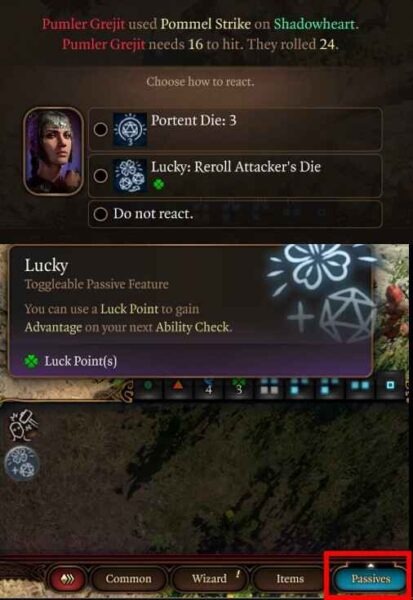
At level 8 we are going to lean into the Divination subclass controlling mechanism with the feat Lucky. Once you turn this on in your reaction and passives, you can influence dice rolls. Instead of determining the roll like Portent, you can roll with Advantage which is two d20 with the highest selected. You can also make enemies reroll giving you a great degree of control. As you can see from the image, these features stack, meaning you can use one, and then another. This setup will help your offensive and defensive potential and creatures a unique build in BG3.
For spell selection, take Confusion for crowd control and prepare the spell. You can also prepare Ice Storm for more area damage or if you want summoning creatures Conjure Minor Elemental is a good choice.
Divination Wizard Level 8 Prepared Spells: Mage Armour, Magic Missile, Thunderwave, Chromatic Orb, Scorching Ray, Misty Step, Flaming Sphere, Counterspell, Fireball, Hold Person, Blight, and Confusion.
Level 9
At Level 9 the Divination Wizard unlocks one level 5 spell, learns two new spells, and has 13 prepared spells to select from. Below are our suggestions for Level 9:
- Cone of Cold (spell selection): Make a flurry of frost, crisp air, and condensed snow crystals erupt from your hands.
- Conjure Elemental (spell selection): Bend the barrier between the Planes until they disgorge an elemental ally to follow and fight for you.
At this level, we gain ultra-powerful spells and two I suggest are Cone of Cold and Conjure Elemental. Cone of Cold is a good damage spell that is conal so it’s much easier to aim and avoid friendly fire than other radial spells. If you selected Minor Elemental, you can with the upgraded version here if you like playing with summoned creatures. I don’t suggest Cloudkill at this level because it’s quite hard to avoid damage in it’s massive radius.
Divination Wizard Level 9 Prepared Spells: Mage Armour, Magic Missile, Thunderwave, Chromatic Orb, Scorching Ray, Misty Step, Flaming Sphere, Counterspell, Fireball, Hold Person, Blight, Confusion, and Cone of Cold.
Level 10
At Level 10 the Divination Wizard unlocks another level 5 spell slot, and subclass feature, and learns one new cantrip and two new spells with another prepared spell. Below are our suggestions for Level 10:
- Third Eye: Darkvision (subclass feature) – You gain the ability to see in the dark out to a range of 24m.
- Third Eye: See Invisibility (subclass feature) – Become able to see invisible creatures, and possibly reveal them to others.
- Friends (cantrip selection): Gain Advantage on Charisma Checks against a non-hostile creature. This spell can be cast while you are Silenced.
- Banishment (spell selection): Temporarily Banish your target to another plane of existence
- Seeming (spell selection): Disguise up to 4 members of your adventuring party.
For spell selection, take a lower-level crowd control skill because you will only have a limited amount of level 5 spell slots. Most of the level 5 spell slots will go to Cone of Cold or one to Conjure Elemental if you use that spell. Banishment is one of the best single-target cc in the game, and Seeming is a great out-of-combat utility spell.
Your subclass unlocks two features relating to seeing in the dark and invisible creatures. These don’t influence the build that much, and we aren’t going to multiclass this build because the level 6 spells are so powerful. Next level you will reach the highest level of spells and really start to add power to the Best Baldur’s Gate 3 Divination Wizard Build Guide.
Divination Wizard Level 10 Prepared Spells: Mage Armour, Magic Missile, Thunderwave, Chromatic Orb, Scorching Ray, Misty Step, Flaming Sphere, Counterspell, Fireball, Hold Person, Blight, Confusion, Cone of Cold, and Banishment.
Level 11
At Level 11 the Divination Wizard unlocks 1 level 6 spell slot and learns two spells with another prepared spell. Below are our suggestions for Level 11:
- Disintegrate (spell selection): Shoot a thin green ray from your finger. If the 50∼100 Force damage reduces the target to 0 hit points, it disintegrates into a crumbly ash.
- Chain Lighting (spell selection): Strike an enemy with lightning. Three more bolts will leap from the target, electrifying as many as three other enemies within 18m.
You’ve come to the final tier of spells, level 6, and there’s something important to point out. You will only get one level 6 spell slot unless you pick one of two of the most powerful Quarterstaffs in the game: Staff of Spellpower or Markoheshkir. These two quarterstaves have a unique passive that forgoes one spell slot and gives a free cast. I suggest selecting two level 6 spells with the intent that you will collect one or both of these staffs in Act 3. Otherwise, you will only be able to cast one level 6 spell and it’s pointless learning a bunch of them.
My personal favorite spell in the game is Disintegrate which is a powerful single-target damage spell. This fits our build perfectly because it compliments the massive volume of AOE damage spells. Chain Lighting is another great choice for area-based damage when enemies are close and 3-6 packs. Create Undead is a great spell for our Necromancer build, but doesn’t fit here. Use your spell slot at level 6 for one of two powerful damage spells.
Divination Wizard Level 11 Prepared Spells: Mage Armour, Magic Missile, Thunderwave, Chromatic Orb, Scorching Ray, Misty Step, Flaming Sphere, Counterspell, Fireball, Hold Person, Blight, Confusion, Cone of Cold, Banishment, and Disintegrate.
Level 12
At level 12 the Divination Wizard learns two new spells and one feat. Below are our suggestions for Level 12:
- Greater Invisibility (spell selection): Turn a creature Invisible. Attacks against it have Disadvantage. It attacks with Advantage. Invisibility breaks when you fail increasingly harder Stealth Checks on attacking, casting spells, or interacting with items.
- Telekinesis (spell selection): Throw a creature or object up to 18m with a thought. Once per turn, you can use Telekinesis again without expending a spell slot. Heavier items deal more damage.
- Ability Improvement (feat selection): Intelligence + 2
At this level, we gain another +2 intelligence, which will allow us to prepare another spell and I suggest Conjure Elemental. With 3 level 5 spell slots, you can cast this outside of combat and still use two powerful level 5 spells. Since we’ve learned two powerful level 6 spells, what you pick here is really flexible. I pick two utility spells Greater Invisibility and Telekineses to round out the build. Here’s a summary of Divination Wizard Gameplay and Spellcasting:
- Single Target Damage: Scorching Ray, Magic Missile, Blight, Disintegrate
- Area Damage: Fireball, Cone of Cold, Chromatic Orb
- Crowd Control: Hold Person, Banishment, Telekinesis
- Utility: Mage Armour, Misty Step, Counterspell
Make sure to keep scrolling to gear recommendations for the Best Baldur’s Gate 3 Divination Wizard Build Guide.
Divination Wizard Level 12 Prepared Spells: Mage Armour, Magic Missile, Thunderwave, Chromatic Orb, Scorching Ray, Misty Step, Flaming Sphere, Counterspell, Fireball, Hold Person, Blight, Confusion, Cone of Cold, Banishment, Disintegrate, Conjure Elemental, and Telekinesis.
Best Gear for Divination Wizard Build Guide
In Games like Baldur’s Gate 3, you’ll explore the world, loot chests and your enemies’ dead bodies, and complete quests, and all those activities can reward you with useful items, potions, armor, weapons, scrolls, and much more. Progression and finding new gear are part of the game, and you will organically get more powerful weapons during your journeys.
Beginner: Starting the Game
Here’s the best beginner gear for our Best Baldur’s Gate 3 Divination Wizard Build Guide:
| Gear Slot | Best Gear Item | Effect |
|---|---|---|
| Head | Circlet of Blasting | Free Scorching Ray |
| Cape | – | |
| Chest | The Protecty Sparkswall | +1 Spell Saves |
| Gloves | Gloves of Cinder and Sizzle | Free Scorching Ray |
| Boots | Disintegrating Night Walkers | Mobility & Misty Step |
| Necklace | Amulet of Misty Step | Free Misty Step |
| Ring | Ring of Absolute Force | Free Thunderwave |
| Ring | Fetish of Callarduran Smoothhands | Free Invisibility |
| Weapon 1 Main Hand | Melf’s First Staff | Free Acid Arrow |
| Weapon 1 Off-Hand | Adamantine Shield | +2 AC (Half-Elf or Human) |
| Weapon 2 Ranged | Bow of Awareness | +1 Initiative |
Below are the Best Act 1 Clothing, Weapons, and Equipment for the Divination Wizard in BG3:
- Circlet of Blasting: Sold by Blurg in the Myconid Colony (Alternative Haste Helm).
- The Protecty Sparkswall: Looted in Gilded Chest in Grymforge X: -645 Y: 360 (Alternative Poisoner’s Robe).
- Gloves of Cinder and Sizzle: Sold by Lady Esther at Rosymorn Monastery Trail (Alternative Gloves of Missile Snaring, or Gloves of Hail of Thorns).
- Disintegrating Night Walkers: Found in Underdark from Ne’re NPC (Alternative Cinder Shoes or Boots of Speed).
- Amulet of Misty Step: Found in a Gilded Chest (X386 Y8) in Defiled Temple (Alternative Moondrop Pendant).
- Ring of Absolute Force: Dropped by Sergeant Thrinn in Grymforge (Alternative Ring of Colour Spray).
- Fetish of Callarduran Smoothhands: Found in Grymforge Abandoned Refuge (Alternatives The Sparkswall, or Sunwalker’s Gift if Human).
- Melf’s First Staff: Sold by Blurg in the Myconid Colony (Alternatives The Spellsparkler, or Staff of Crones).
- Adamantine Shield Complete the Adamantine Forge Quest in Grymforge use if Human or Half-Elf Race (Alternatives Glowing Shield, or Wood Woad Shield).
- Bow of Awareness: Sold by Vendor Roah Moonglow in the Shattered Sanctum. You can use it even without proficiency for extra initiative!
Advanced: End-Game
The following table presents the best advanced and end-game gear for our Best Baldur’s Gate 3 Divination Wizard Build Guide:
| Gear Slot | Best Gear Item | Effect |
|---|---|---|
| Head | Hood of the Weave | +2 Spell Save & Roll |
| Cape | Cloak of the Weave | +1 Spell Save & Roll |
| Chest | Robe of the Weave | +2 AC, Saving Throw |
| Gloves | Quickspell Gloves | Cantrips Bonus Action |
| Boots | Helldusk Boots | Mobility & Hellcrawler |
| Necklace | Spellcrux Amulet | Restore spell slot |
| Ring | Killer’s Sweetheart | Auto Critical |
| Ring | Shifting Corpus Ring | Free Invisibility and Blur |
| Weapon 1 Main Hand | Markoheshkir | Free Spells, +1 Roll |
| Weapon 1 Off-Hand | Viconia’s Walking Fortress | If Human/Half-Elf |
| Weapon 2 Ranged | Darkfire Shortbow | Free Haste Spell |
Below is the best Act 3 Armor, Weapons, and Equipment for Divination Wizard in BG3:
- Hood of the Weave: Sold by Mystic Carrion in Philgrave’s Mansion during Act 3 (Alternative Helldusk Helmet, or Mask of Soul Perception).
- Cloak of the Weave: Sold by Helsik at the Devil’s Fee (Alternative Cloak of Protection).
- Robe of the Weave: 1 At Ramazith’s Tower (Alternative Helldusk Armour, or Robe of Supreme Defences).
- Quickspell Gloves: Purchased at Lorroakan’s Projection at Sorcerors’s Sundries (Alternative Helldusk Gloves, or Gemini Gloves).
- Helldusk Boots: Gilded Chest on the top floor of Wyrm’s Rock Fortress (Alternative Disintegrating Night Walkers).
- Spellcrux Amulet: Drop by The Warden in Moonrise Towers Prison X: 569 Y: -650 (Alternative Amulet of Greater Health).
- Killer’s Sweetheart: Obtained from the Gauntlet of Shar in Act 2 (Alternative Ring of Protection, Risky Ring).
- Shifting Corpus Ring: Drop by Fist Marcus at the Last Light Inn (Alternative Ring Of Regeneration, or Crypt Lord Ring).
- Markoheshkir: At Ramazith’s Tower (Alternatives Staff of Spellpower, or Incandescent Staff).
- Viconia’s Walking Fortress: Looted from Viconia DeVir during Shadowheart’s companion quest (Alternative Shield of Devotion).
- Darkfire Shortbow: Sold by Dammon Last Light Inn Act 2 (Alternative Gontr legendary bow).
Best Divination Wizard Consumables, Potions, and Items
The following list represents the best individual use consumable items that will aid in our Wizard Build:
- Potion of Greater Healing: 8d4 + 8 healing and removes burning.
- Potion of Invisibility: Become invisible for 1 minute. Attacking or casting spells ends the status.
- Potion of Flying: 10 turns of flying.
- Potion of Speed: 3 turns of an increased action via the Haste condition.
- Potion of Angelic Slumber: fall asleep for two turns, then restore all spell slots, hit points, and abilities.
- Elixir of Bloodlust: Once per turn when you kill a foe, you gain HP 5 temporary hit points and an additional action.
- Elixir of Peerless Focus: gain advantage on concentration saves (ingredients Sublimate of Belladona, and any ashes).
- Elixir of Vigilance: gain +5 bonus initiative and you cannot be surprised (ingredients sublimate of bloodstained hook, any ashes).
- Superior Elixir of Arcane Cultivation: gain a level 3 spell slot (ingredients Solution of Night Orchid, any Vitriol).
- Elixir of Viciousness: increase your critical hit chance (ingredients Vitriol of Shadowroot Sac, any Ashes).
- Elixir of Universal Resistance: gain resistance to all damage (ingredients Vitriol of Divine Miasma, any Sublimate).
Permanent Bonuses
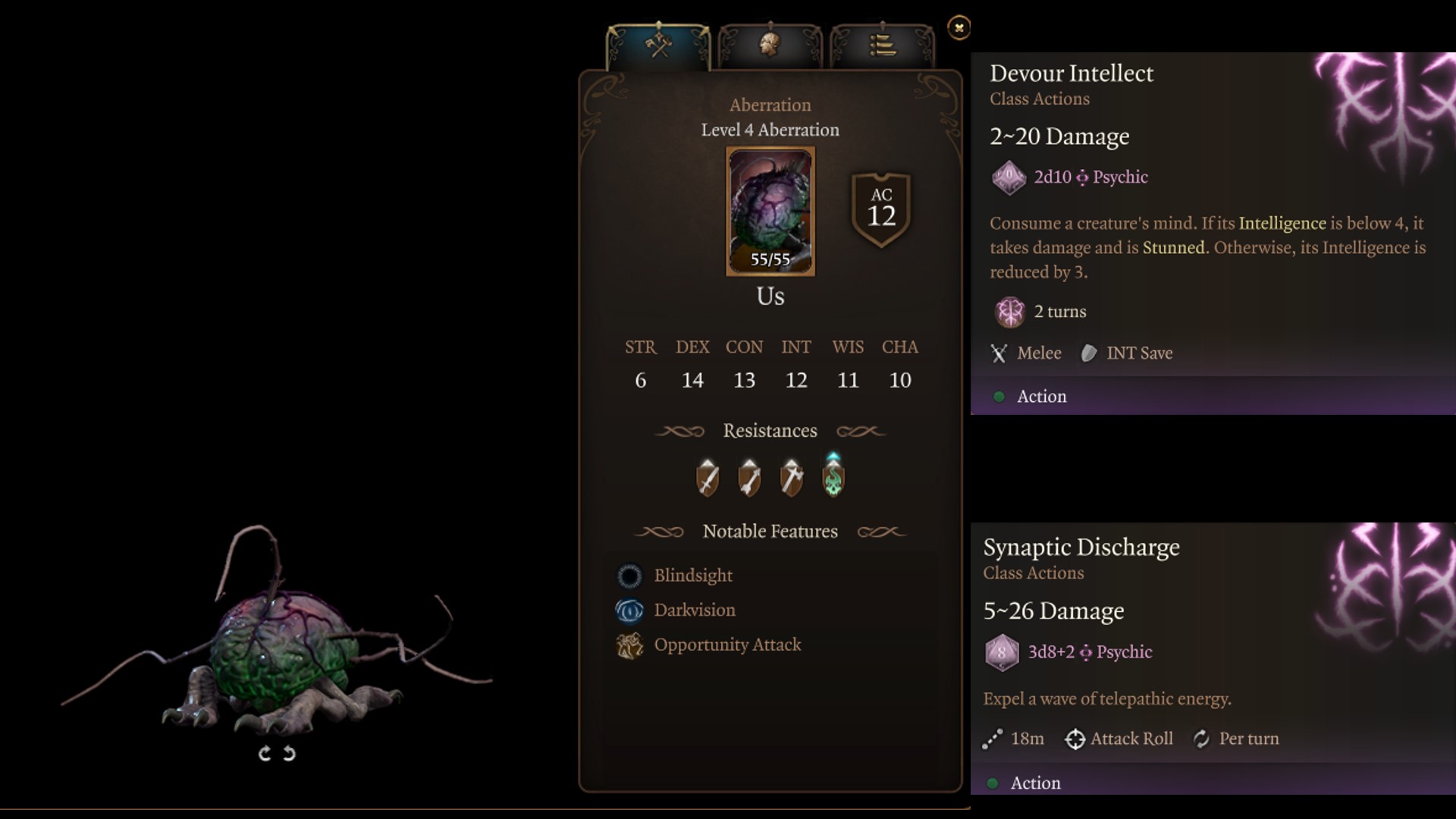
Throughout Baldur’s Gate 3, you will have the ability to gain permanent bonuses to your character. These can grant additional spells, ability scores, and other bonuses. Permanent Bonuses are not displayed throughout the campaign but are vital to increase overall combat performance. We have all permanent bonuses here in a guide, but the most important ones for you to collect are listed below.
| Act 1 | Act 2 | Act 3 |
|---|---|---|
| Auntie Ethel’s Hair: Gain +1 to an Ability Score. | Potion of Everlasting Vigour: Gain +2 Strength. | Mirror of Loss – +2 to an Ability Score of your choice. |
| Awakened: Use illithid powers as a Bonus Action. | Slayer Form: Ability to transform into the Slayer. | Partial Ceremorphosis: Access to tier 3 illithid Powers. |
| Scratch: Gain Find Familiar Scratch. | Summon Us: Allows you to summon Us. | Sweet Stone Features: Blessed permanent. |
| Cheeky Quasit: Gain Summon Quasit Shovel. | Statue of the Gods: +2 to Saving Throws | |
| Loviatar’s Love: 30% Hit Points or less, you gain a +2 bonus to Attack Rolls and Wisdom saving throws. | ||
| Necromancy Of Thay: access to powerful spells in Act 3. | ||
| Volo’s Ersatz Eye: See Invisibility |
Best Permanent Bonuses for Divination Wizard in Baldur’s Gate 3
Divination Wizard Gameplay Tips and Tricks
- Pre-Buff: Always cast Mage Armour following a long rest to maintain 16 or higher AC.
- Bonus Action: Don’t forget your bonus action for a potion or Misty Step.
- Use Environment: Combine a fire spell with Grease and coat the area with fire damage or water and electrical,
- Knockback: Combine a big knockback with Misty Step and create distance whenever you can to survive.
- Area Damage: Don’t hit allies with friendly fire and point or aim your spells to avoid allies.
- Rest Constantly: Your spell slots will quickly run out after one or more fights, especially if challenging.
- Positioning: Look to move back in distance and even use Hide to prevent damage from coming in.
- Crowd Control: Make sure you focus on taking out the primary target with Sleep, Hold Person, or any other CC to limit potential damage.
- Big Nuke: Typically, you want to fire off your big spells early to finish off targets before they can attack you.
- Use Consumables: One of the best early consumables is the Potion of Speed for two actions per turn.
Remember, this build guide serves as a foundation, and you can always adapt it to suit your preferences and the needs of your campaign. Enjoy playing as a formidable the best Best Baldur’s Gate 3 Divination Wizard Build Guide!
Best Baldur’s Gate 3 Divination Wizard Build Guide Summary
Subclass Divination School
Armor: Cloth
Weapons: Quarterstaff & Shield
Background – Sage
- Strength – 8
- Dexterity – 16
- Constitution – 14
- Intelligence – 16
- Wisdom – 10
- Charisma -10
Level Progression
- Level 1 – Mage Armour Spell
- Level 2 – Portent Subclass Feature
- Level 3 – Misty Step Spell
- Level 4 – Feat +2 Intelligence
- Level 5 – Fireball and Counterspell
- Level 6 – Haste Spell
- Level 7 – Blight Spell
- Level 8 – Lucky Feat
- Level 9 – Cone of Cold Spell
- Level 10 – Banishment Spell
- Level 11 – Disintegrate Spell
- Level 12 – Feat +2 Intelligence
Looking For More About Baldur’s Gate 3?
Thank you for reading Best Baldur’s Gate 3 Divination Wizard Build Guide. We provide the latest news and create guides for Baldur’s Gate 3. Also, watch me play games on Twitch or visit my YouTube channel!
 Reddit
Reddit
 Email
Email
